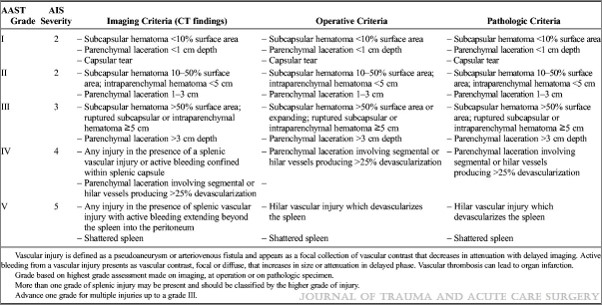Over the years, the American Association for the Surgery of Trauma (AAST) has developed and maintained a library of organ injury scales. Organ injury scaling allows us to compare apples to apples in research studies, and in many cases enables us to tailor interventions and predict outcomes. Many of the scales have been in place for decades and have not been updated. The spleen, liver, and kidney scales were introduced 25 year ago, and received their first update last December. During the next three posts, I’ll review what’s new and different with them.
The biggest change to all three scales has been the incorporation of specific vascular injuries seen on modern-day CT scans. It is recommended that scanning for solid organ injury be conducted using dual phase (arterial and portal venous) scanning techniques. This increases study sensitivity and provides the best images for accurate diagnosis and scaling. Also note that specific criteria are now provided for CT, intraoperative, and pathologic diagnosis.
Let’s start with the spleen today. Here are the updated guidelines. Click the image or link to get a bigger image in a new window.
 Click to download larger image
Click to download larger image
The main change to this scale is the addition of active bleeding contained within the spleen (pseudo-aneurysm or contained extravasation) to Grade IV, and uncontained extravasation to Grade V.
In my next post, I’ll discuss the new features of the liver injury scale.

